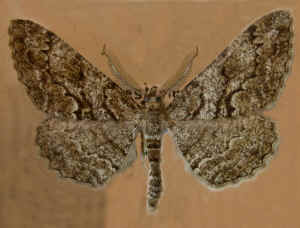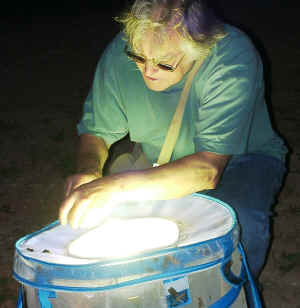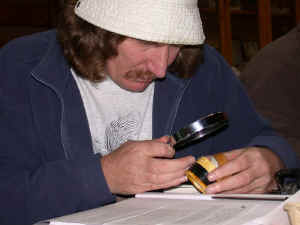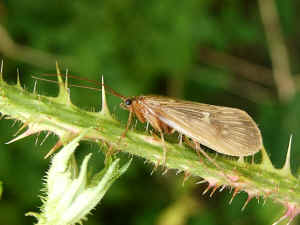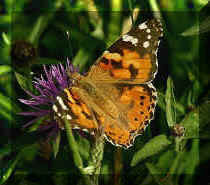Mothathon Overview - continued
A 48 hr Moth catching
extravaganza at the Woodland Education Centre,
together with some general observations on Moths in Britain.
Previous
page
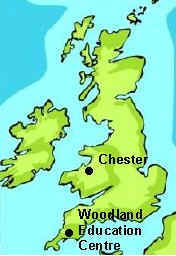
| In general, more moth species are found in southern England than in the north.
The climate is milder, which allows species on the northerly limits of their geographical
range to survive, while numbers are also swelled by migrants from the continent. One of the Mothathon experts from Chester, which is to the north of Wales, noted that he had already trapped in that area 36 times, from the beginning of the year, up until the Mothathon. This had yielded 240 different species so far. As a comparison, trapping over a single weekend at the Woodland Education Centre, near the southern coast of England, yielded 178 species. This represents 75% of the total number of species trapped over several months in Chester, in a single weekend at the Centre.
The species was not trapped on this occasion, but it must be pointed out that this does not mean that it was not trapped over the Mothathon. Enormous variations in species catch are possible when trapping on different nights and even at slightly different locations. The absence of Feathered Beauty on that night is therefore not confirmation of its absence over the Mothathon. To put this in perspective, Elephant Hawk-moth was not found by the County Recorder's team, but no-one would suggest that this means the species is absent from the Centre. In addition, although Feathered Beauty was not found on the night, the County Recorder's team did trap a new moth for Devon, called Crambus silvella. For more on this click here Several specimens of another Feathered Beauty look-a-like, Satin Beauty, were also trapped on the night of the County Recorder's visit. Satin Beauty is normally slightly larger than Feathered Beauty. However, the specimens trapped on this occasion were all small, well-marked specimens which could be confused with Feathered Beauty.
A definitive decision awaits, but based on the evidence, future trapping in the same area over the right flight time may well increase the known distribution of Feathered Beauty. The recorded distribution of individual species is partially a combination of the actual distribution of the species, together with the success of people at finding the species in a particular area. This latter is obviously dependent on the amount and timeliness of trapping being done in the area, as well as on the identification skills of the trappers. Moth trapping has greatly increased in popularity over recent years, so geographical species records are constantly being swelled. However, it is worth bearing in mind that failure to trap a species in a particular area does not necessarily mean it is absent. What is caught often depends on being in the right place at the right time. |
||||||||||||||||||||||||||
| Moth traps placed only a few hundred metres apart, or even less, will often yield
surprisingly different results. While checking the traps placed around the Centre over the
Mothathon, it was very noticeable how traps in different areas were yielding very
different catches. It is not only moths which are attracted to light. A great variety of other insects will usually also be found on examining the traps. Traps near water had large numbers of adult caddis flies. Hoverflies, diving beetles and water boatmen are sometimes also attracted to the light. The traps located on the bridlepath, behind the Heathland Project area, attracted large numbers of froghoppers and terrestrial beetles which were not noted elsewhere.
Other catches besides moths in the traps also included hornets, (which can denude the moth catch by eating all the moths before the moth trapper arrives to liberate them in the morning!), a Red Admiral butterfly, wasps, midges and mayflies. Later analysis of the moth catches according to trap will no doubt also yield a variety of differences in the moth catches according to trap location.
|
||||||||||||||||||||||||||
As an illustration of the difference between the number of moth and butterfly species in Britain, 14 species of butterfly were recorded at the Centre on the 27th July, as opposed to 125 moths. These were:
For more on butterflies found at the Centre, click here. |
